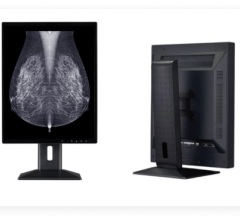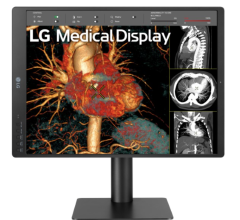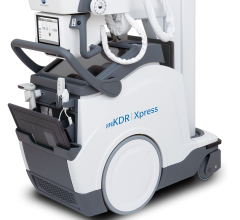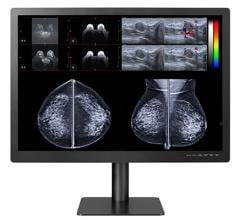
John S. Koller is the president of KAI Consulting, a firm specializing in secure, high-availability infrastructure planning for healthcare and clinical IT solutions.
With all new technologies come new challenges. As imaging has evolved within the pathology domain from analog to digital, causing radiology and pathology imaging to crossover, the devices that generate the digital images pose several challenges. The third and final section of the Visible Light series focuses on regulatory and integration issues associated with implementing digital imaging in pathology.
Digital Imaging Chain
Within pathology the image chain starts with the acquisition of the gross specimen. The preparation of the specimen (Figure 1) will determine how effectively a pathologist can derive a usable visible light image from the sample. In the normal optical path, the pathologist is the final step in processing the visible light into an intelligent result.
With the addition of digital imaging, we introduce a second series in the image chain (Figure 2). This digital image series is comprised of a camera to perform the analog-to-digital conversion on the microscope or in a slide scanning device; an informatics solution to perform image management; and the required software to present on a display device the images for the pathologist to review.
Once the image becomes digital, an entire new set of tools and technologies can be applied to the image. In addition to soft copy viewing of the image both locally and at remote locations, providing the ability for remote telepathology consulting, they also are additional tools that can provide cell identification, quantitative analysis and 3-D rendering and modeling capabilities.
Whole Slide Scanners
The current whole slide imaging (WSI) scanner is designed as an automated device to convert the physical slide to a digital image, while maintaining a level of consistency and quality in the image acquisition process. The construction of a WSI requires the manufacturer to take a number of critical components into consideration, including:
• A reliable robotic slide positioner that can perform repeatable slide loads, unloads and positioning beneath the lens.
• An optical light path that can accommodate the appropriate types of magnification, the objective lens that is required for the study and a light source. These light sources can consist of simple bright field sources or a combination of special fluorescent exciters and the appropriate pre- and post-filters.
• The system must provide a level of white balance or white calibration through an automated process. This allows the device to maintain a high level of consistency and quality in the images produced.
• Finally, the system needs a method of acquiring the image in a digital form. This is usually performed by a digital camera or a line scanning device.
Using a simplistic view, the process for the device to generate a digital image would consist of a calibration phase during the initialization cycle, whether this is once a day, once per run or once per slide. This depends on the vendor’s architecture. The robot mechanism would then select a slide from the feeder assembly, usually some sort of novel slide holder, and move the slide into position.
Once the slide is staged, and depending on the type of device, it scans the entire slide in a frame by frame approach. Some take a high-level overview image of the slide, using various algorithms, to identify regions of interest that would narrow down the scanning to the area limited by the actual specimen. During this process, the camera is feeding each of these images back to the software that resides in the computer that manages the slide scanning process.
During postprocessing, the sections are then melded together either through an association in the software or a stitching algorithm to remove the line between each separate image or slide. Postprocessing produces the series of images that represents the specimen on the slide. The images are then stored in the archive in one of many
standard or proprietary file formats.
Image Archiving and Storage
The current implementations of WSI’s usually include an image management server solution. This image management server is responsible for the storage, archiving, image distribution, workflow management and, in some cases, report management of the pathology imaging solution.
Infrastructure Demands
The implementation of digital pathology has significant potential impacts on the IT infrastructures of the organizations choosing this technology. A single specimen slide can generate data object sizes from as few as tens or hundreds of megabytes to as many as tens of gigabytes. This can have a significant effect on storage and archiving infrastructures. A real world example of this is a medium-sized European academic institution with 10 pathologists that implemented two slide scanning microscopes. During normal operation of this
facility, the technology generated in excess of 1TB of new data per week from scanned slides. With the volumes approaching 50TB per year, this could quickly overwhelm most facilities’ IT infrastructures.
What decision-makers also need to consider is that this is only the initial copy of the data. What happens to the facility’s infrastructure when multiple copies are required to meet the organization’s disaster recovery strategy?
Mini-PACS for Pathology
An additional challenge is the chosen architectures of most of the vendors that are implementing or developing digital pathology imaging devices. If we compare the current state of digital pathology to the early development of digital soft copy radiology, we see a parallel in what was commonly described as the self-contained mini-PACS mentality.
This type of approach assumed a homogeneous environment with a single vendor’s components. This includes the acquisition modality (WSI), storage and archiving and management, including workflow of the images and the final display technologies, comprising all the reporting and analytic tools. The problem with this type of approach is that it assumes that this solution is the center of the informatics environment. With the trend that today’s facilities are taking a larger scale enterprise perspective on managing the digital assets of the enterprise, the monolithic, departmental-only solutions are less attractive from a cost and data lifecycle management perspective.
Integration and Interoperability Challenges
To deal with integrating digital pathology into the larger enterprise of managing digital assets, these devices will need to accommodate the currently used and accepted standards agreed upon by other imaging and informatics vendors within healthcare. These standards consist of DICOM for images and HL-7 for information systems connectivity.
Without the implementation of standards there will be situations where a single facility would be limited in their choices of technologies to that of a single vendor or vendor family of relationships. It is these interoperability and interfacing challenges that have the potential to limit the adoption rate of these devices.
If a laboratory has one vendor’s imaging solution, and over time a different vendor provides a better set of features and functionality, the images collected by the first system may not be easily integrated with the display and management tools of the second system, and may require the operation of parallel systems. This doesn’t provide for the most efficient use of technology and facility resources.
Currently there is no standard, consistent file format in use by WSI vendors to deliver the images. The file types range from JPEG, JPEG200, TIFF, DICOM and some proprietary formats. This compounds the vendor to vendor incompatibility. In addition, few vendors support the use of HL-7 to interface the WSI with the Laboratory Information System (LIS) and allow LIS to manage and monitor the department workflow.
Current Standards Activity
Looking at the current development of the standards effort, most of the imaging standards are deficient when applied to application in pathology. At the August 2005 annual international DICOM meeting in Budapest, the DICOM working group for pathology (WG-26) was formed. It is the mission of this group to extend the DICOM visible light standards to allow the support and integration of intelligent slide scanning devices into the digital pathology model.
A parallel HL-7 effort is actively addressing the information system interoperability, the structured reporting requirements and the unique nomenclatures as identified in the SNOMED effort for the reporting functions under pathology. A? potentially complementary activity to that of both the DICOM WG-26 and the HL-7 effort is that of the Laboratory Digital Imaging Project (LDIP) sponsored by the Association for Pathology Informatics.
Interfacing is Not Interoperability
It is imporatant to remember that interfacing is not interoperability. Interoper-ability takes into account not just moving the data from point to point but being able to intelligently understand it and utilize it for all of its forms.
Quality and Regulatory Control Requirements
With the ability to read digital images on various systems and in various locations, the management of image quality throughout the image chain becomes increasingly important. As an example, how the coloring of the image is represented is affected by many points in the chain from the slide preparation and staining to the calibration of the white balance of the camera and display panel.
Another challenge that digital imaging for pathology is going to encounter is FDA regulation for the devices and software used for clinical diagnosis. To date, there is no firm opinion on whether these systems require FDA 510(k) certification as a class II device, and each vendor’s opinion varies widely. Currently there is only one vendor that is pursuing FDA 510(k) class II certification.
There are parallel between radiology and pathology where regulatory compliance might be required. The two primary points are image acquisition and display. The camera provides the analog-to-digital conversion, while the display provides the conversion back to visible light. In both cases, the devices must have compatible translations for image and color that are consistently captured and consistently reproduced.
There are also the issues of the postprocessing software. These applications are managing the reassembly or stitching of the images in each of these cells back together to represent the entire slide specimen and performing identification, quantitative analysis or 3-D reconstruction. In any case, they need to be validated that they do not introduce any artifacts that might impact false positives or negatives in the final diagnostic evaluation.
Digital imaging in pathology will introduce significant benefits and challenges for the departmental workflow and IT infrastructures within a facility. Additionally, the lack of consistent standards being implemented by the WSI vendors will continue to make interoperability between different vendors’ solutions a challenge.
The potential upside of digital imaging in pathology is the ability to address many shortcomings that currently are experienced. One of these deficiencies is the shortage of qualified pathologists and pathologists with deep experience in unique specialties. By utilizing digital imaging and telepathology solutions, the work can now be brought to the physician location instead of the physician being brought to the work location.
Another potential application for digital imaging is the ability to preserve in digital form the pathology records of patients that might be affected by large-scale disasters. If we look at the recent Katrina disaster, most of the legal object of records, such as the slide, were destroyed due to flooding. If these slides had been digitized and the facility had followed normal disaster recovery procedures, the images would have been archived at a second remote location, thus protecting the patient records.
Given the potential benefits and the obvious challenges, is digital imaging in pathology ready for primetime? The jury is still out on that question.


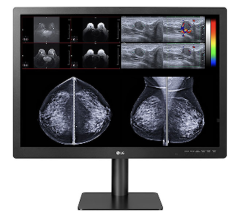
 March 12, 2024
March 12, 2024 
